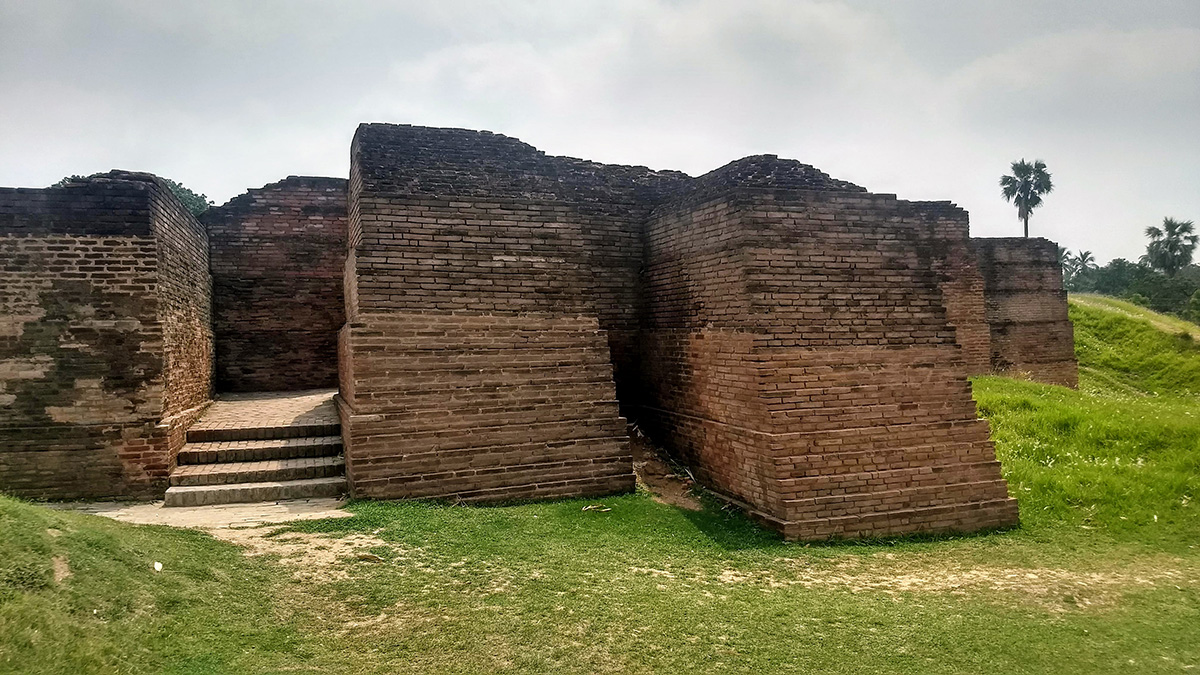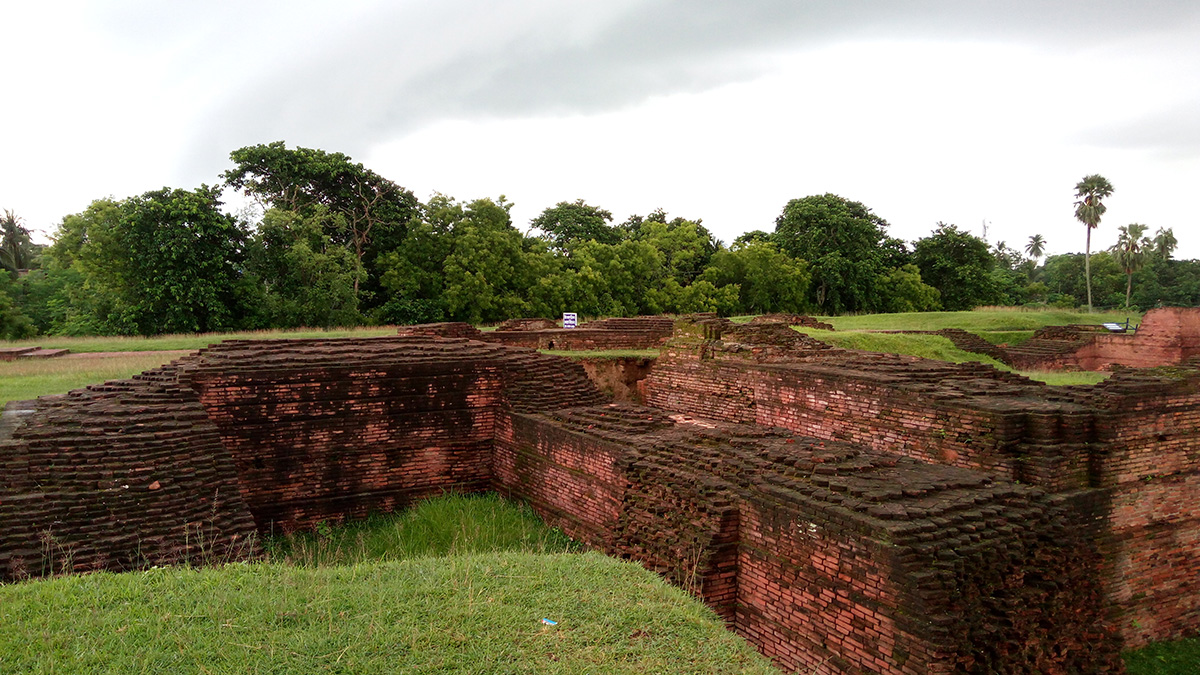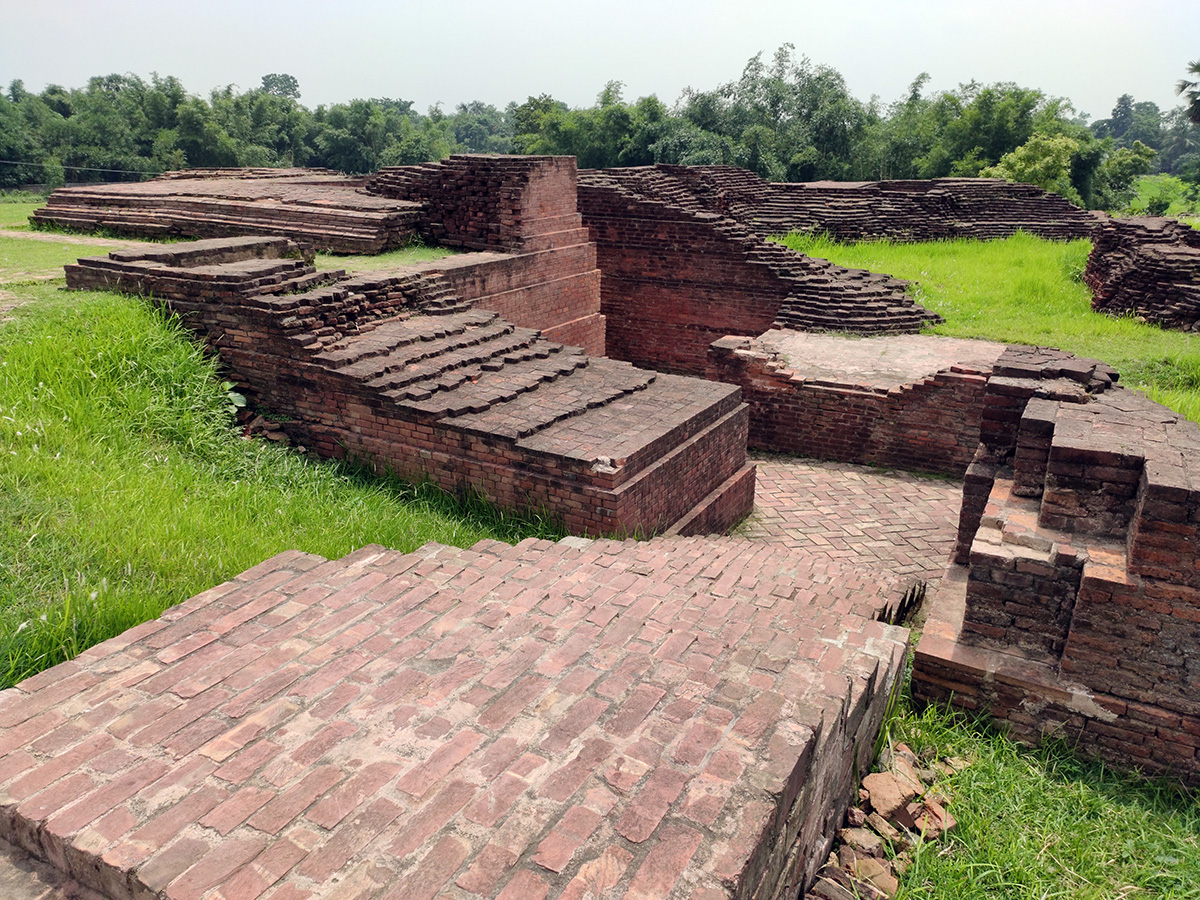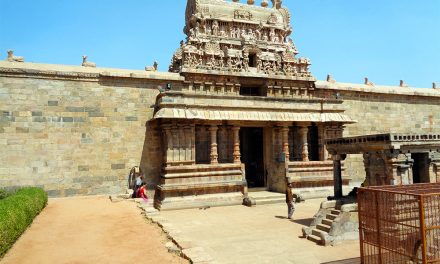Did you know that Mayapur was once the capital of the Eastern Empire of India, and that the king’s palace lies in ruins a short walk from ISKCON Mayapur?
Just behind Chand Kazi’s samadhi are the ruins known as Ballal Dhipi, which even today no one really knows much about. If you ask locals they have no idea what it is or what it was. Up until 1980 it was a giant earthen mound 30 feet high, covered in grass. No one knew what was underneath.
Finally in the 1980’s the Archaeological Survey of India did excavations and discovered the ruins located within. Now its just abandoned and no one goes there. The locals mostly ignore it and know nothing about it.
But there is an interesting statement made in Srila Prabhupada’s purports (Chaitanya Charitamrita, Adi Lila 1.19) that tie in to these ruins:
“Bengal is sometimes called Gauḍadeśa, partly because it forms a portion of Maithila and partly because the capital of the Hindu king Rāja Lakṣmaṇa Sena was known as Gauḍa. This old capital later came to be known as Gauḍapura and gradually Māyāpur.”
Raja Lakshmana Sena mentioned here was the son of the king who made these ruins. Isn’t it fascinating, that those abandoned ruins are mentioned by Srila Prabhupada in the Chaitanya Charitamrita purports? Gaudapura, later called Mayapur, was this king’s capital city.
Everyone usually knows that Navadvipa was a major learning center in Bengal in the past, but how many people know that in Bamanpukur, a short walk from ISKCON Mayapur, was the capital of the Gauda kingdom (covering Bangladesh, Bengal, Assam, Odisha, Bihar and Varanasi)?
Followers of Chaitanya Mahaprabhu are called Gaudiya Vaishnavas. We are, at least partly, named after the kingdom of these ruins, which are completely forgotten and ignored, even though they are right next to us.
Elsewhere Srila Prabhupada speaks about these ruins as follows:
“The celebrated ancient capital of the Sena dynasty, which was known as Gauḍadeśa or Gauḍa, was situated in what is now the modern district of Maldah. Later this capital was transferred to the ninth or central island on the western side of the Ganges at Navadvīpa, which is now known as Māyāpur and was then called Gauḍapura. Lord Caitanya appeared there, and Lord Nityānanda came there and joined Him from the district of Birbhum. They appeared on the horizon of Gauḍadeśa to spread the science of Kṛṣṇa consciousness, and it is predicted that as the sun and moon gradually move west, the movement They began five hundred years ago will come to the Western civilizations by Their mercy.”
We should note that Srila Prabhupada made these statements prior to the ruins even being discovered. They were only excavated in the 1980’s, and they have been dated to be over 1,200 years old, with additions being made by various kings over time. This is the heart of the original Navadvipa town, and further confirms Srila Bhaktivinoda Thakur’s position that Yogapeeth is the birth place of Chaitanya Mahaprabhu. The “central island” of Navadvipa (Antardvipa) is located in this exact location, and the area is now known as Mayapur.
The close proximity of the present palace ruins to Chand Kazi’s samadhi also supports this idea, as he was the magistrate of Navadvipa, and a very high ranking officer in the kingdom of Emperor Hussein Shah. Even after 500 years, the Navadvipa administration center was still located near this palace area.
Srila Bhaktivinoda Thakur, the great Gaudiya Vaishnava acharya, wrote the following about his divine vision at this very site:
“One night, Kamal, a clerk and I went up on the roof [of a building, Rani’s house, in Nabadwip city] in order to look around. It was 10 o’clock, and was very dark and cloudy. Across the Ganga, in a northerly direction, I saw a large building flooded with light. I asked Kamal if he saw it and he said he did, just as I described it. I asked the clerk and he said, “I did not see anything.” Hearing that, I was quite surprised. In the morning I went back up onto the roof of the Rani’s house and looked again carefully at the place where I had seen the building, and saw that there was a tāl palm tree standing there. When I asked others about it, they said that the place was known as Ballal Dighi and that the ruins of Lakshman Sen’s fort, etc., were close by. That Monday I returned to Krishnagar and the following Saturday I went to see Ballal Dighi. That night I again saw the same wonderful phenomenon coming from the same location, and the next day I went on foot to inspect the area.”
Please don’t let these ancient historical monuments be forgotten. These kings would have been the protectors and supporters of all the temples of Mayapur, Navadvipa and Gauda Desha. We owe these kings our thanks and gratitude for having protected and preserved most of the ancient temples in this area that we visit today. Additionally our entire Gaudiya sampradaya is at least partly named after this dynasty.












































